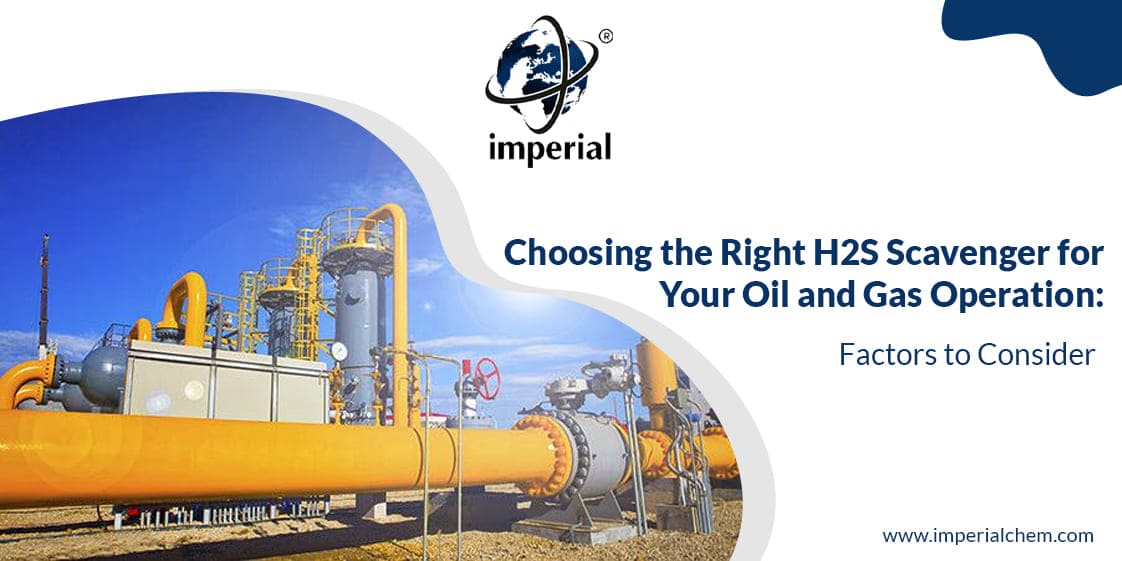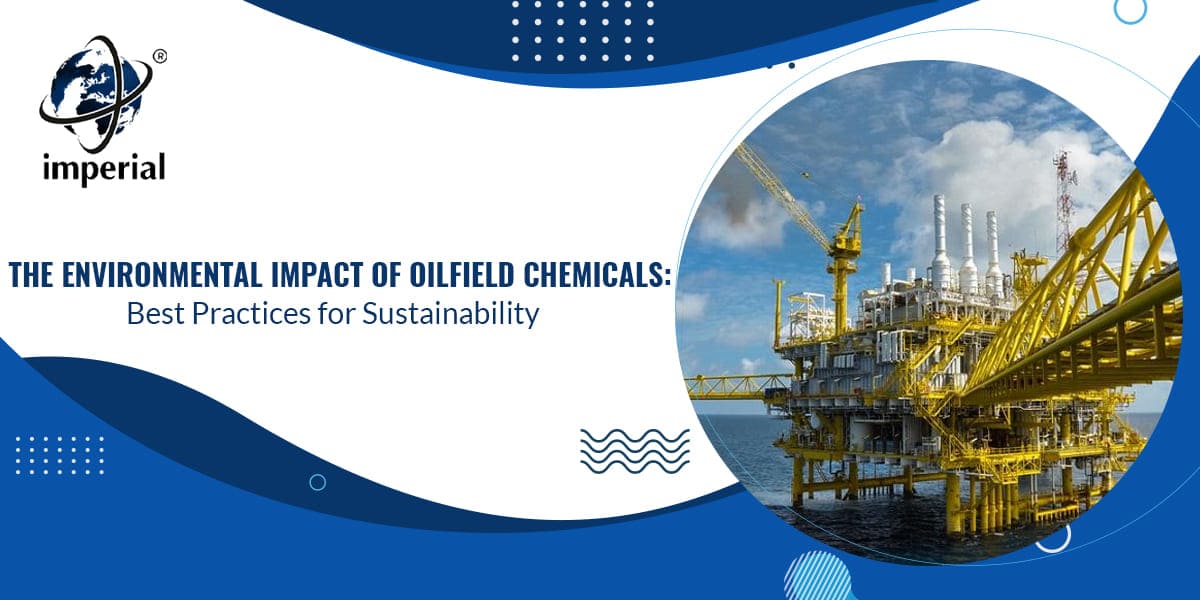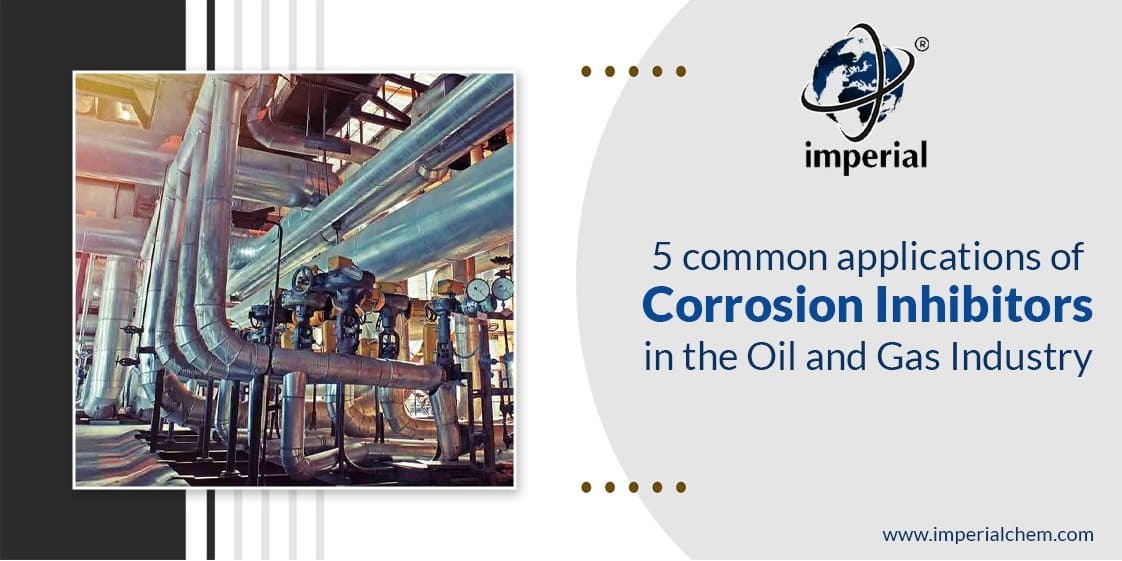- All Products
- Corrosion Inhibitor
- Oxygen Scavenger
- Drag Reducing Agent / Flow Improver
- H2S Scavenger
- Triazine
- Demulsifier
- Emulsion Breaker
- Surfactant
- Wax / Parrafin Disperssant
- Asphaltene Inhibitor

Blog Details

10
Feb
2025
How Triazine-based biocides ensure long-term protection in oilfield applications
Maintaining the integrity of oilfield operations is paramount for efficient and profitable hydrocarbon extraction. A significant threat to this integrity comes from microbial activity, which can lead to a range of problems, from pipeline corrosion to reservoir souring. This is where the crucial role of biocides comes into play. Among the various types available, Triazine-based biocides have proven exceptionally effective in providing long-term protection against microbial challenges in oilfield applications. As a leading Triazine-based biocide manufacturer in India, Imperial Oilfield Chemicals understands the intricacies of microbial control and offers high-quality solutions for the industry.
The Microbial Challenge in Oilfields: A Complex Ecosystem
Oilfields provide a unique and often harsh environment conducive to the growth of various microorganisms, including bacteria, fungi, and algae. These microbes can thrive in the water, soil, and even within the hydrocarbon matrix itself. Their activity can have devastating consequences, impacting both infrastructure and production:
-
Corrosion: Microorganisms, particularly sulphate-reducing bacteria (SRB), can induce microbiologically influenced corrosion (MIC) by producing corrosive by-products, such as hydrogen sulphide (H₂S). This can severely damage pipelines, storage tanks, and other equipment, leading to leaks, failures, and costly repairs, not to mention environmental hazards.
-
Reservoir Souring: SRB can convert sulphates present in the formation water to H₂S, a toxic and corrosive gas. This "souring" of the reservoir not only poses safety hazards to personnel but also reduces the quality of the produced hydrocarbons, making them more difficult and expensive to refine.
-
Formation Damage: Microbial growth can plug pores in the reservoir rock, reducing permeability and hindering hydrocarbon flow. This can significantly impact production rates and the overall economic viability of the well. Biofilms, complex communities of microorganisms encased in a self-produced slime layer, exacerbate this issue.
-
Equipment Fouling: Biofilms can form on surfaces, restricting flow and reducing the efficiency of equipment. This can lead to increased energy consumption and the need for frequent cleaning and maintenance, adding to operational costs. Heat exchangers, pumps, and other critical equipment are particularly vulnerable.
-
Health and Safety: H₂S produced by microbial activity is a highly toxic gas that poses serious health risks to personnel. Strict safety protocols and monitoring are required to mitigate these risks.
Triazine-based Biocides: A Powerful and Versatile Solution
Triazine-based biocides have emerged as a preferred choice for combating microbial problems in oilfields due to their broad-spectrum activity, long-lasting efficacy, and relatively favourable environmental profile compared to some other biocides. They work by disrupting essential cellular processes in microorganisms, ultimately leading to their death.
-
Broad-Spectrum Activity: Triazine-based biocides are effective against a wide range of microorganisms commonly found in oilfield environments, including bacteria, fungi, and algae. This makes them a versatile solution for diverse microbial challenges, simplifying treatment strategies.
-
Long-lasting Protection: These biocides exhibit excellent persistence, providing extended protection against microbial regrowth. This reduces the frequency of treatments required, saving time and costs associated with downtime and chemical applications.
-
Compatibility: Triazine-based biocides are generally compatible with other chemicals used in oilfield operations, minimising the risk of adverse reactions or interference with other treatment processes. However, compatibility testing is always recommended.
-
Ease of Application: They are relatively easy to handle and apply, making them suitable for various oilfield applications, from water injection to pipeline maintenance. Different formulations are available to suit specific application methods.
-
Cost-Effectiveness: While the initial cost of Triazine-based biocides may be higher than some alternatives, their long-lasting efficacy and broad-spectrum activity often result in lower overall treatment costs in the long run.
Applications of Triazine-based Biocides in Oilfields: From Borewell to Pipeline
-
Water Injection: In waterflooding operations, where water is injected into the reservoir to enhance hydrocarbon recovery, Triazine-based biocides offered by Imperial Oilfield Chemicals - an excellent Triazine-based biocide exporter in India, are used to control microbial growth in the injected water, preventing reservoir souring, formation damage, and wellbore plugging.
-
Drilling Muds: These biocides are added to drilling muds to protect them from microbial degradation and maintain their desired properties, such as viscosity and fluid loss control. This ensures efficient drilling operations and protects the wellbore.
-
Hydraulic Fracturing: Triazine-based biocides are used in hydraulic fracturing fluids to control microbial growth and prevent formation damage, ensuring optimal production from fractured wells.
-
Production Systems: Triazine-based biocides are used to treat production fluids and equipment, preventing corrosion, scaling, and fouling caused by microbial activity, ensuring the smooth and efficient flow of hydrocarbons to the surface.
-
Storage Tanks: They are also used to protect storage tanks from microbial contamination, preserving the quality of stored hydrocarbons and preventing costly product degradation.
-
Pipeline Maintenance: Triazine-based biocides are used to treat pipelines, preventing MIC and ensuring the long-term integrity of these critical transportation arteries.
Choosing the Right Triazine-based Biocide: A Tailored Approach
-
Specific Microbial Challenge: Identifying the specific microorganisms present through microbial testing is essential for choosing a biocide with optimal efficacy. Different species have varying sensitivities to different biocides.
-
Oilfield Conditions: Factors such as temperature, pH, salinity, and pressure can influence the performance of biocides. These parameters must be considered when selecting a product and determining the appropriate dosage.
-
Dosage and Application Method: Proper dosage and application techniques are crucial for achieving effective microbial control. Overdosing can be costly and may have negative environmental impacts, while underdosing may result in ineffective treatment.
-
Environmental Considerations: The environmental impact of the biocide should be considered, including its toxicity to aquatic organisms and its biodegradability.
-
Regulatory Requirements: Local regulations regarding the use and disposal of biocides must be adhered to.
Conclusion:
Microbial activity poses a significant threat to oilfield operations, impacting efficiency, safety, and profitability. Triazine-based biocide exporter in India offer a powerful and reliable solution for managing these challenges, providing long-term protection against a wide range of microorganisms. By partnering with a reputable Triazine-based biocide manufacturer in India like Imperial Oilfield Chemicals, oilfield operators can effectively mitigate microbial risks and ensure the long-term integrity and productivity of their assets. Contact us today to learn more about our customisable biocide solutions and how we can help you protect your oilfield operations and maximise your returns.











